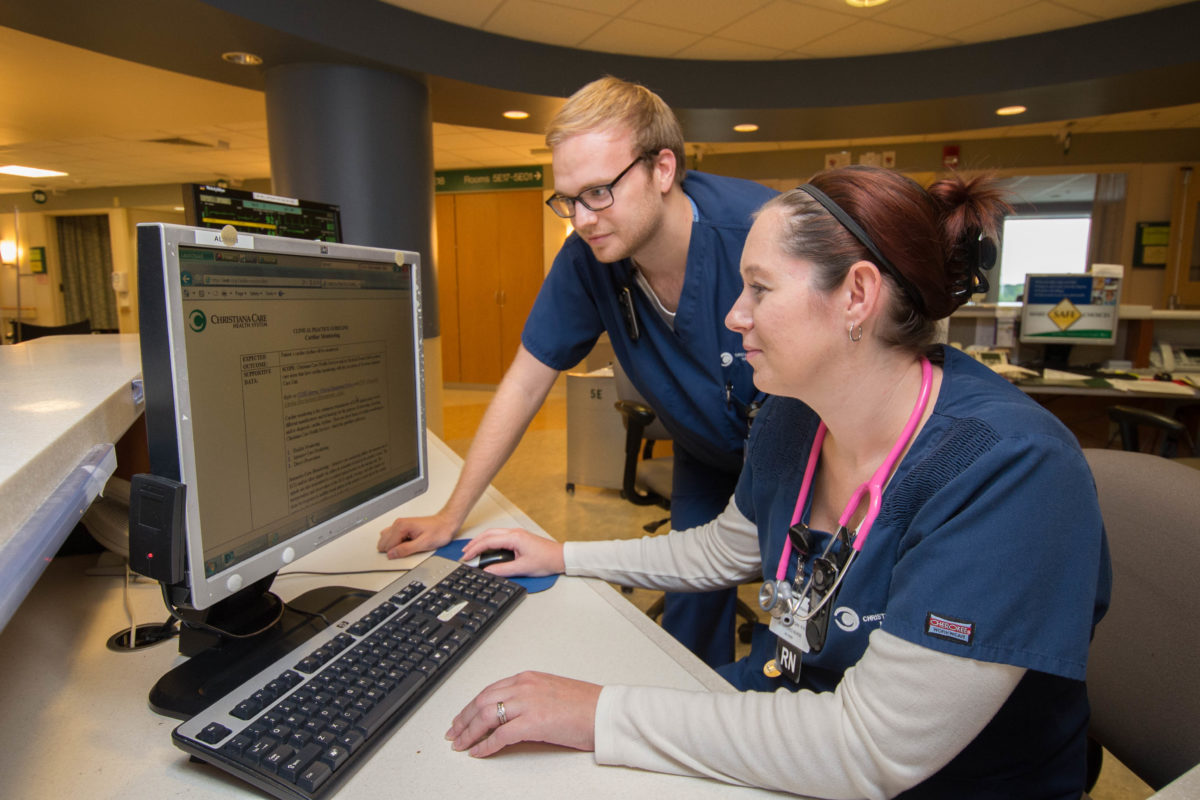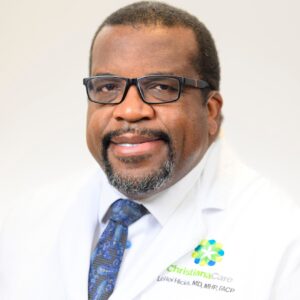It took a crisis to expose an opportunity. In 2012, a malfunction in Christiana Hospital’s cardiac monitoring system forced its staff to scramble to use mobile monitors.
In the wake of the outage, interventional cardiologist Andrew Doorey, M.D., FACC, FACCP, had a succinct answer to the question of how many patients on cardiac monitoring actually needed it.
“I said, ‘That’s easy; most patients don’t need it,’” Dr. Doorey said.
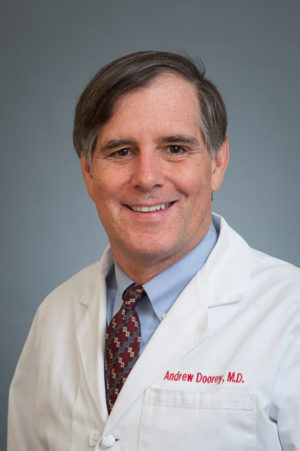
He was right, and the six-month redesign process that followed transformed the way that Christiana Care uses heart monitoring, also known as cardiac telemetry. Its success in reducing the unnecessary use of telemetry led to publication in JAMA Internal Medicine and national recognition, including coverage by national publications, speaking requests and more than 50 teleconference calls with other health systems.
More than recognition, these reforms marked progress toward health care’s Quadruple Aim of better care, better experience of care, lower cost and provider well-being.
Patients who didn’t need telemetry were freed from wearing bulky monitors that could unbalance them. Fewer false alarms meant providers, especially nurses, could avoid frustrating distractions and devote their time to more effective care. And the changes saved millions of dollars in health care costs without resulting in higher rates of mortality or cardiac arrest.
Impact continues today
In 2017, Choosing Wisely, a campaign to improve patient care by reducing the use of unnecessary tests and procedures, recognized Christiana Care’s efforts as an example of following through on the campaign’s ideals. They wrote that implementation “resulted in immediate and sustained decreases in telemetry orders and telemetry duration of 43 percent and 47 percent, respectively.”
And in a 2017 update to its practice standards for electrocardiographic monitoring, the American Heart Association cited the JAMA study as an example of using its standards to minimize false alarms:
“Others have integrated the AHA practice standards into their electronic ordering system on the basis of the right indication for the right duration and found no apparent increase in mortality, cardiac arrest, activation of the rapid response team, or life-threatening arrhythmias.”
Christiana Care’s patients continue to benefit, and the lessons the health system learned apply to the increasingly urgent effort nationwide to limit unnecessary and expensive care.
Choosing wisely
When, in 2012, Dr. Doorey and the team considered ways to reduce unnecessary cardiac telemetry, they didn’t need to start from scratch.
Medical guidelines had long suggested that only a limited population of at-risk patients really needed constant cardiac monitoring. But studies found over-monitoring was rampant.
Doctors saw cardiac monitoring as a safety net that could warn them of abnormal heart rhythms, or arrhythmias. Strictly speaking, this was correct, but the truth was more complicated. The “net” was best at finding false positives; only about 1 percent of alarms signified a serious condition. When Christiana Care reviewed 4,600 alarms, they found only one alarm that signaled a life-threatening condition.
Dr. Doorey and the team took the issue to their nursing colleagues, who were most often the ones ordering telemetry and responding to false alarms.
“The nurses said, ‘This is overdue,’” Dr. Doorey said. “And we were astounded.”
Nurse Manager Carolina Flores-Gopez, MSN, MHA, RN, CCRN, NE-BC, said alarm fatigue had set in as nurses’ workflows were disrupted by false alarms.
The changes made as a result of this effort saved more than 115 hours of nursing time every day. A 70 percent reduction in the daily telemetry census generated an annual savings of $4.8 million.
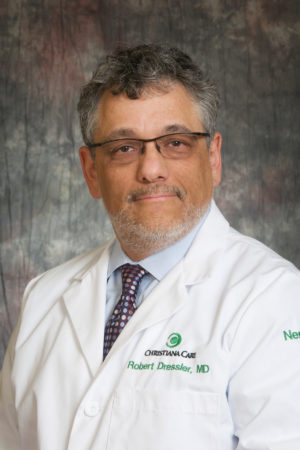
A team led by Robert M. Dressler, M.D., MBA, quality and safety officer in the office of Academic and Medical Affairs, described how they reduced unnecessary monitoring in a Research Letter in the Sept. 22, 2014 issue of JAMA Internal Medicine.
Dr. Dressler has been tracking the use of telemetry in the years since the changes, and he’s found that the reductions have been durable.
“The data show no degradation over the past four years,” he said.
Meanwhile, nurses now have more time to devote to the patients who need them the most.
“The value is in being able to focus on those who have the clinical need for telemetry,” said Lynda M. Huselton, MSN, MSM, RN-BC, a nurse manager who now cares for patients with heart failure.
Why did it work?
Looking back, Dr. Doorey said he expected pushback to what was in essence a plan to pare back a common and popular tool. But there was little resistance.
The team credits its success to a number of factors, including the ways they framed the changes, the information technology implementation and the preservation of provider autonomy.
Though they recognized the change would likely save money, they described it in terms of improving care.
Dr. Doorey said practitioners are more comfortable changing their practice to benefit their patients, even though “we all feel we’re stewards of our resources.”
Furthermore, the IT implementation was seamless and simple, Dr. Doorey said. Even seemingly minor decisions turned out to be important. For example, he collaborated with another health system that ran into trouble because their software required nurses to click a button to end telemetry. Meanwhile, Christiana Care’s software canceled it automatically if warranted by the patient’s medical situation.
“It’s empowered us to discontinue telemetry based on a patient’s clinical presentation,” Huselton said. “With the aid of the tool, the guesswork was taken out of the equation.”
In other words, the system incentivized behavior that followed the guidelines.
Meanwhile, Christiana Care’s system introduced friction where appropriate, such as the re-ordering of telemetry, so that it was done mindfully.
Finally, the fact that the changes were so eagerly accepted signals the value of listening to clinical staff, especially the nurses.
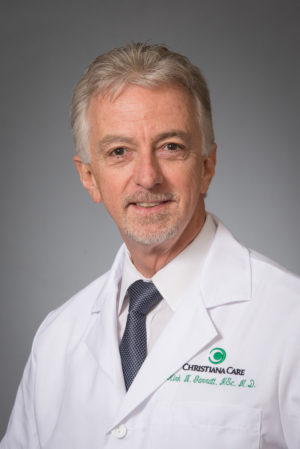
“The providers knew,” said Kirk Garratt, M.D., MSc, FSCAI, Christiana Care chief of Cardiology and medical director of the Center for Heart & Vascular Health.
“We are embracing the principle to pay attention to the messages just below the surface.”
Finally, the system maintained respect for physician decision making. At their discretion, a doctor can have a patient monitored even if his or her condition does not meet the guidelines.
“We empower doctors while encouraging and nurturing a critical thinking mindset,” Dr. Garratt said.
